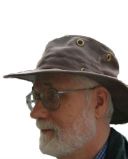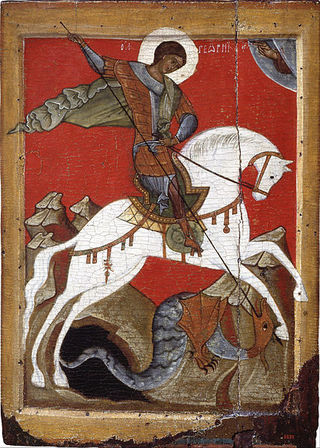
“At least 90 people were killed at the hands of a German nurse who injected patients with cardiovascular medication in order to show off his resuscitation skills.” [1]
Instead of dismissing Niels Högel, 40, as a “psychopath” or a “serial killer,” let’s ask, What was on his mind? and, How does it relate to you and me?
The man “used five different drugs including ajmaline, sotalol, lidocaine, amiodarone and calcium chloride, police said ... Overdoses can lead to life-threatening cardiac arrhythmia and a drop in blood pressure, causing a rapid decline in an already sick patient.” Then he would wow colleagues by bringing the dead back to life. The “90 killed” were the folks who didn’t come back when called.
Though it sounds perverse, the nurse was acting out one of our core motives: heroic rescue.
Rescue shapes behavior everywhere — in politics, romance, medicine, advertising, news, and 911 hotlines. Money rescues us from poverty. Just as we fall in love with people whose admirable qualities promise to rescue us from all our flaws, so “uplifting” ideals may save us from the depressing or maddening inadequacies of everyday reality. It’s the way we’re built.

As creatures uniquely aware that we’re doomed to die, humans understandably dream of rescue. It begins at birth, when the supremely vulnerable infant hollers for help. We survive because parents save us from hunger, predators, germs, and drowning in the bathtub. Through rescue we learn trust and love and hope. To be worthy of rescue, an infant adapts to the script of its culture and tries to grow up as a hero esteemed for saving others or even the world.
No matter how impersonal it seems, rescue is grounded in survival anxiety and parent-child themes. Rulers, even everyday strongmen, save their “children.” In traditional Christianity, the divine Father—in fact, the whole holy family—rescues sinful mortals. In ancestor worship, the living call on forebears to lend a hand and keep life going.
As a rule, rescue is mutual. Warriors may fight to save the group, but the group also rescues the warriors by decreeing their lives heroic and meaningful. Likewise, patrons and parents save offspring, whose homage substantiates identities all around. By contrast, people who fall into social death are cut off from relationships. As in clinical depression, they can’t imagine rescue.
In addition, rescue organizes society. St. George rescues the Princess and the walled city from the devouring dragon, and then George and Princess form a family and rule the city. The Bible imagines the deities who save us as rulers of the ancient world, calling them “lord” and “king.” Worshipers are servants of the Lord, grateful to be saved from misfortune and oblivion. This is a messianic fantasy system, and still slaying dragons today. You’re in trouble, the campaigning Mr. Trump told his supporters, and “I alone” can help you.
The tragic note is that when rescue is desperate, it can be aggressive. Nazis started wars and exterminated scapegoats in order to save the master race from Communists and Jews. But even tame entertainments may mask ghastly motives. In Romeo and Juliet, the Friar “kills” Juliet with his potion so he can rescue her from death and bring peace to wonderstruck Verona. The Friar apparently wouldn’t mind taking a godlike role. After all, what would Jesus do?
So Niels Högel, the nurse, had plenty of precedents for his routine. He was playing doctor, but also stage magician and miracle-worker. He was rescuing not only code blue patients in Intensive Care but also staff observers by showing them that anyone can be saved from death. As in a magic show, the audience played along with the performer. They wanted to believe, not quiz him about technical protocols. Even the doubters didn’t call for an investigation.
A psychiatrist said that Högel was aware he had caused many people, including his patients and their families, “huge damage, suffering and anxiety.” He said the former nurse wanted it to be known that he was not “basking in the limelight” of his case. “This is not so. He is deeply ashamed,” he told the court.
Why then did Högel kill? Well, who wouldn’t want the next best thing to supernatural powers? But an explanation should probably include the stress of caring for desperately ill patients, being helplessly reminded of our personal fragility, suffering, and doom. Dr. Otto Dapunt, a head of heart surgery who had worked with him, “often found Högel to be ‘overly zealous’ in wanting to take care of the more critical patients. He was also often unusually moved by the deaths of his patients, Dapunt said, recalling one occasion when the accused took two patients who had died to the morgue and returned in a ‘completely distraught state.’”
This suggests that Högel felt crushing guilt, but also the impact of inescapable death. At the same time, more personally, death means a loss of someone: going away. And even for a stranger, this can be traumatic. But why keep repeating the trick? Of course, repetition makes things more routine. And each time he had a new audience to wow with his priestly role. Yet, like the obsessive miser, the nurse may have been hoarding proofs of his powers. At failures, he gambled that the next proof might be enough to allay terror and repair mortal reality.
The problem is, powers based on illusion let you down. One minute a god, the next a guilty egotist. Since everybody dies eventually, even successful reanimations intensify awareness of loss. So, tragically, Högel’s need to keep the illusion of power alive led to more killing and finally life in prison — a symbolic death and, for him, a form of suicide.
Can we learn anything from Högel’s behavior? For years he concentrated on death. But in that taboo zone, in that mystery on the edge of thought, ideas and feelings bleed into one another. For the nurse, flight blurred into fight: fear led to a bravura fight against fear and to killing. Caught up in emergency nervous system arousal, he must have found the experience intoxicating.
The U.S. entertainment industry thrives on this dynamic. Its preferred plots scare you, then show forceful heroism restoring life. And it’s not just a sly business scheme. It’s the way we’re built. The “crisis” over North Korean weapons tests is a good illustration. The fears of the regime in Pyongyang drive development of nuclear missiles that terrify the world and trigger retaliatory threats. The cycle escalates until those involved become ranting adversaries in danger of tripping into action. The North Koreans issue adolescent taunts, and the American leader responds with bluster about “fire and fury like the world has never seen.”
Naomi Klein’s The Shock Doctrine sees “disaster capitalism” exploiting the resurrection trick. Neoliberalism battens on natural and human-produced catastrophes. Like the nurse, the US and UK killed Iraq with a military injection. Then with an injection of new capital, to the world's amazement, Iraq was supposed to spring back to life glowing with prosperity. We know how that's turned out.
This is where we are now. Don't applaud the nurse: look up his sleeve.
References
1. "German nurse suspected of murdering at least 90 patients," Guardian, 8.28.17. https://www.theguardian.com/world/2017/aug/28/german-nurse-niels-hoegel…



